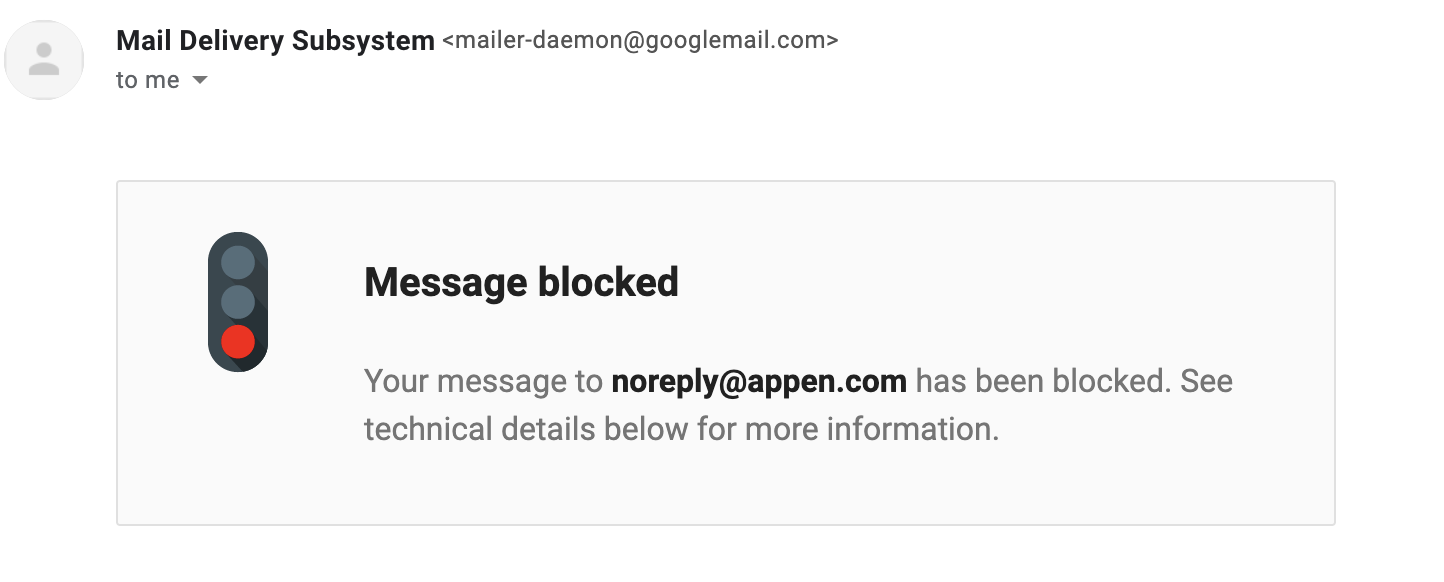

Last updated on
February 8, 2023
Email marketing has been around for a long time. You’d think, then, that companies would have nailed the technique by this point.
It turns out the opposite is true, and many of us have a long way to go and many mistakes to undo before we reach email nirvana.
One such mistake is the use of no-reply email addresses.
We still see them all the time, despite some pretty clear evidence that they’re counterproductive to the success of your email marketing campaigns.
In this article, we’re going to discuss eight ways that using a no-reply email address is actually hurting more than it’s helping and provide you with an alternative method for email sends that is truly productive.
Companies use a no-reply email address to send email updates to customers; only it doesn’t allow the receiver to send a response through their email client.
Pretty straightforward, right?
Here’s what they look like:

If a customer were to hit reply on this email chain, their response would bounce back.

The reasons for not using a no-reply email might seem obvious (why wouldn’t you want to hear from your customers?). However, plenty of companies are still using them.
Let’s review eight different ways that no-reply emails are hurting your email marketing efforts.
No-reply emails are notorious for being caught by spam filters, particularly if they belong to smaller companies.
Bigger businesses who have proven their reputation are known to email providers, so they’re less at risk of being caught by a filter. However, that doesn’t mean you won’t get marked as spam by the receiver.
Why?
Consider what happens when a customer receives an email that pushes them over the line and makes them want to unsubscribe.
Even though you’ve included an unsubscribe button at the bottom of your email, many customers won’t bother searching for it.
Look at how small this one is, right at the bottom of a long email.

Often, receivers will simply hit reply and type up an email that reads “Unsubscribe.”
When they cannot do this, the next easiest step is to mark that message as spam and move on with things.
It’s part of why roughly 50% of emails sent today still get marked as spam, and it’s only going to harm your reputation and ability to generate further revenue from email marketing campaigns.
Many marketers use no-reply emails because the message they send out wasn’t designed to elicit a response. But that doesn’t mean your customer isn’t going to want to respond.
For example, no-reply email addresses are often used to send promotional emails like this one:

The marketer, in this case, expects that the customer will click through and view the product on their website. But what if they have a question about the terms of your sale?
They’d have to navigate through several pages on your website to find the best method for contacting you via email.
If instead, you had used an email that accepts replies, they’d simply be able to address the question to you and get on with their day.
If you’re still using no-reply email addresses, you’re creating friction for your customers and making the purchasing process more arduous.
Perhaps the most harmful aspect of using a no-reply email address is the image it creates.
Basically, what you’re saying to your customers is, “We want you to hear from us, but we don’t want to hear from you.”
Consider the user journey here. They’ve come across one of your ads on social media, entered their details in one of your mobile forms, and signed up to receive communications from you.
The first email they get tells them that you don’t want to engage in a conversation — that’s not very friendly.
When a customer can reply to your email, even if it’s as simple as saying thanks for the information, their email provider will automatically whitelist your address.
This means future emails are more likely to get through and to be read by your customer.
Using a no-reply email address means you lose out on this opportunity.
Out-of-office replies can be a helpful tool for outbound sales reps and direct marketers.
They give you insight into the best times to send future emails and even integrate with your CRM or email marketing platform to provide you with an alert. This lets you know to try sending that email again when your prospect is back in the office.
More than ever, sales opportunities are born out of conversations.
However, if you’re limiting the ability to spark a conversation with a potential customer, you’re negatively impacting your ability to upsell them.
Consider this scenario.
A customer purchases a new TV from your online tech and appliance retailer. A few weeks later, you have a special on Chromecasts, but this buyer isn’t sure whether what you’re selling is compatible with the particular model of TV they’ve just purchased from you.
If your email address accepts replies, they can quickly shoot off that question. It can then be distributed to the right department and person on your team who can quickly close the deal.
With a no-reply address, this can’t happen. The customer might make a mental note to visit your store to check, but the likelihood that this ends up slipping their mind exists.
The result? A missed opportunity and a lost sale.
Email addresses don’t last forever.
People move on. Businesses change their domain names, and some people even change their names.
Consider this scenario. A couple of years back, a prospect signed up to your email list using a form just like this one, embedded in a blog post discussing the five best PEO companies.

(Image Source)
However, they’ve now switched jobs and are no longer the HR rep at that company. You can more or less consider this a lost opportunity.
That’s because if you’re using a no-reply email, you won’t receive notifications that let you know this email address is no longer in service.
That essentially means your email list becomes bloated and will impact metrics such as open and reply rates.
If you’ve been using no-reply emails to date, you might be in the same boat.Try this free email list validation tool to check which addresses are still valid and which you need to purge from your list.
In some European countries, no-reply email addresses are actually illegal.
This presents a legal challenge to your business, especially if you are generating leads by allowing people to sign up via a form.
In this case, you don’t have control over their location and could be sending no-reply emails to countries where this practice is banned.
The simple answer here is to stop using no-reply email addresses immediately.
Instead, use an email name such as contact@, support@, or help@.
It would be wise to create an email address that isn’t already in use, allowing you to accurately track responses to your marketing emails and distribute them to appropriate team members for replies.
It shouldn’t take long to set up. You’ll just need to copy your email templates to the new address and create an internal process for handling replies.
Moving on from no-reply email addresses is a pretty simple move, though if your email marketing practices are well-established, it might take a little while to get the transition finished.
Don’t let this deter you, as no-reply emails are hurting your business more than they are helping.
Let’s recap on the eight reasons why:
Ready to take your email marketing efforts to the next level? Check out how Mailmunch’s email marketing software can help.
Sania Khan is a content creator who has been writing for the past seven years. A content marketer by day and a poet by night, she previously worked for a large multinational and left it to pursue her passion for writing. She enjoys a good read with wit and tea to get her day started.
Tags:

M. Usama
April 19, 2024

M. Usama
April 19, 2024

M. Usama
April 18, 2024